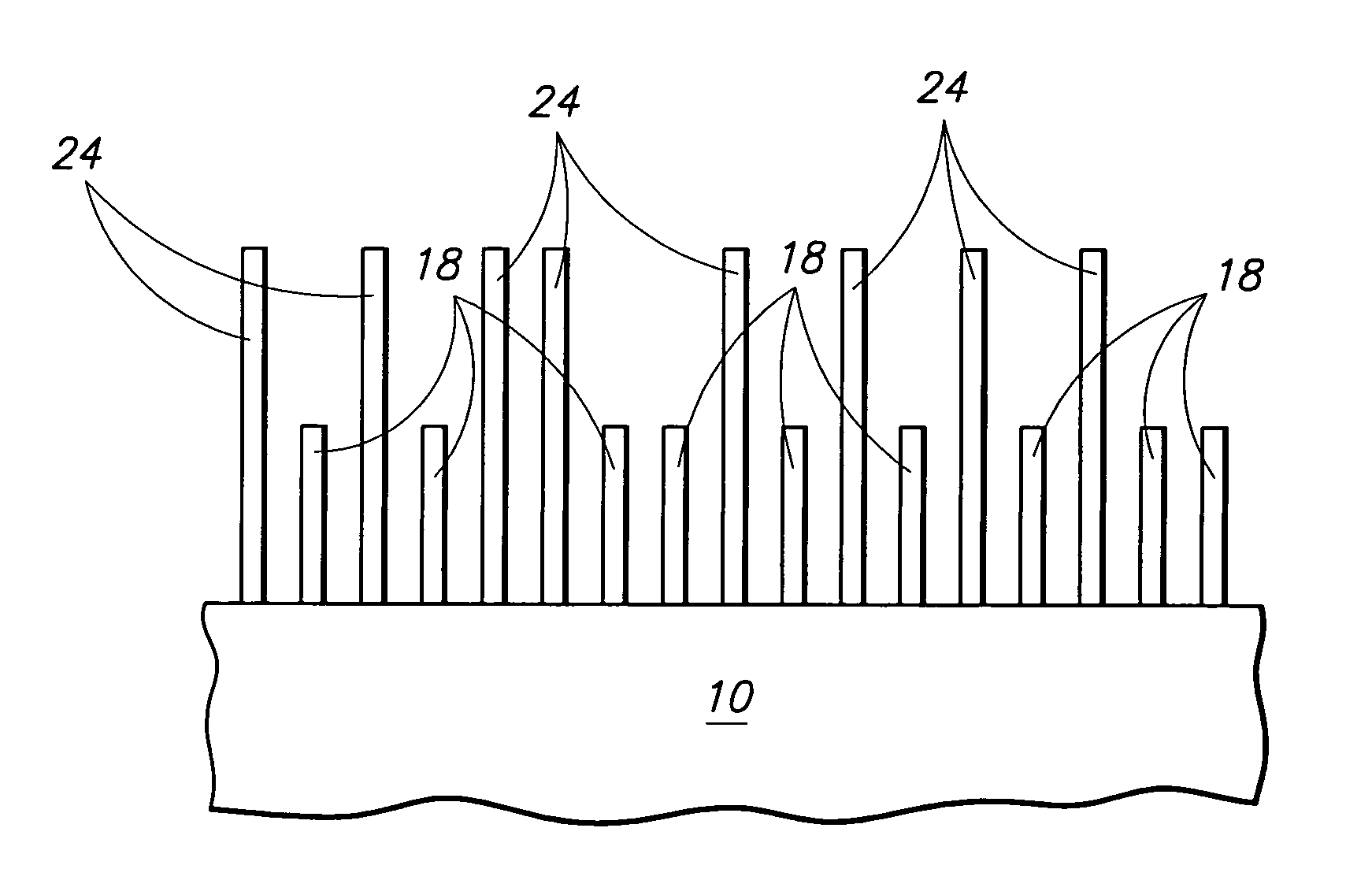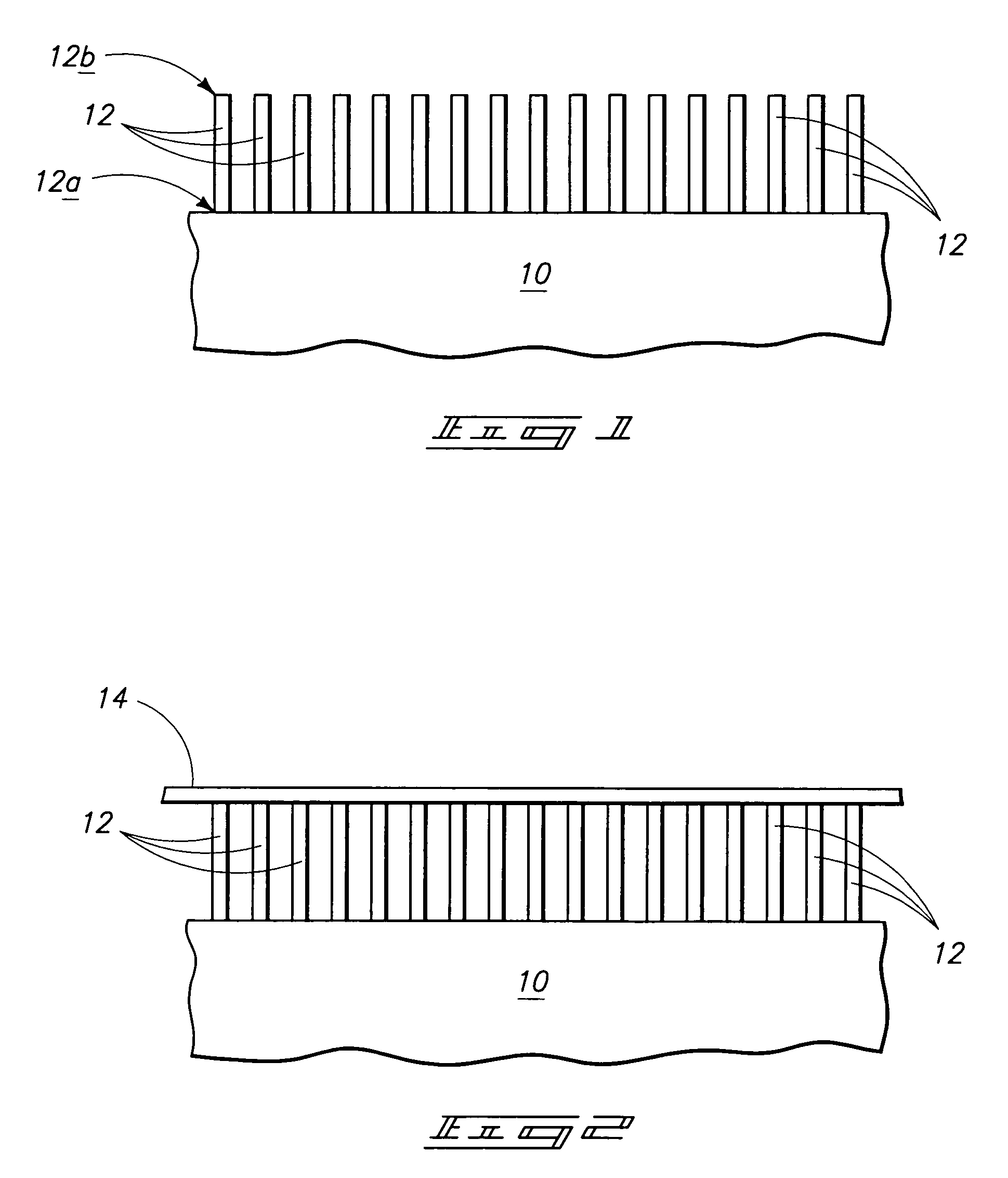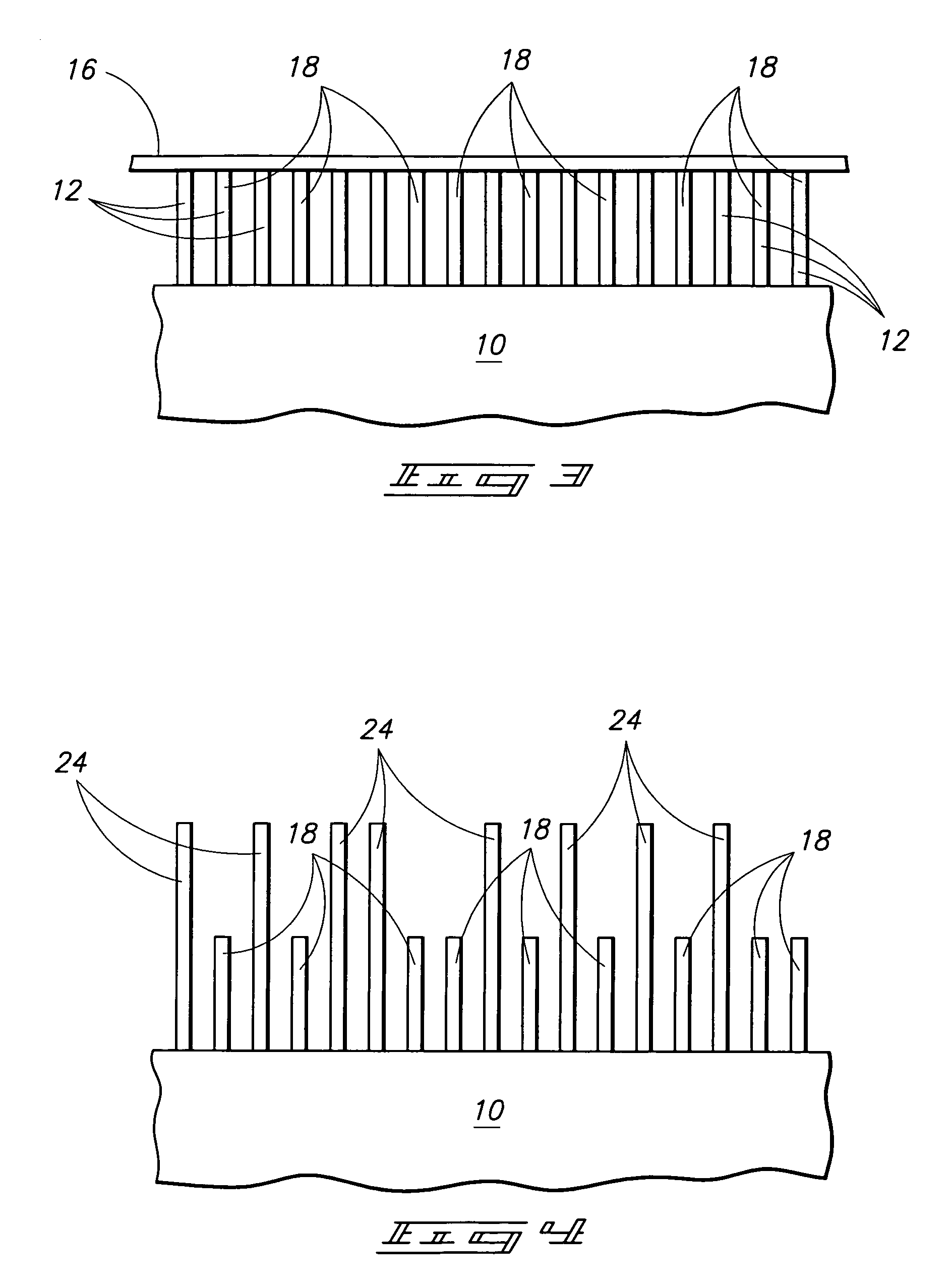Nanotube forming methods
a technology of nanotubes and forming methods, applied in the direction of carbonsing rags, coatings, chemistry apparatus and processes, etc., can solve the problems of difficult sorting nanotubes according to their electrical properties and/or controlling fabrication methods, etc., to achieve effective conductivity, effective conductivity, effective conductivity
- Summary
- Abstract
- Description
- Claims
- Application Information
AI Technical Summary
Benefits of technology
Problems solved by technology
Method used
Image
Examples
Embodiment Construction
[0023]FIG. 9 shows a chart of single-wall carbon nanotube (SW-CNT) band gap with respect to inverse nanotube diameter. Ecmin is the minimum energy of the conduction band and Evmax is the maximum energy of the valence band. The band gap values in FIG. 9 are based upon tight binding calculations and yield a band gap range of from about 0.3 to about 0.9 electron volts (eV) for respective diameters of from about 50 to about 6 Angstroms. Generally, materials exhibiting a band gap of from about 0.5 to 1.0 eV may be most suitable for a semiconductive channel. Materials that do not exhibit a band gap may be considered conductive (for example, metallic nanotubes). Semiconductive materials exhibiting a band gap less than about 0.01 eV may be considered quasimetallic. Based upon the calculations shown in FIG. 9 for (7,12) chiral SW-CNT, tubes with diameters greater than about 27 Angstroms exhibit a band gap less than 0.5 eV and are less suitable for a semiconductive channel. (According to the ...
PUM
| Property | Measurement | Unit |
|---|---|---|
| band gap | aaaaa | aaaaa |
| diameters | aaaaa | aaaaa |
| band gap | aaaaa | aaaaa |
Abstract
Description
Claims
Application Information
 Login to View More
Login to View More - R&D
- Intellectual Property
- Life Sciences
- Materials
- Tech Scout
- Unparalleled Data Quality
- Higher Quality Content
- 60% Fewer Hallucinations
Browse by: Latest US Patents, China's latest patents, Technical Efficacy Thesaurus, Application Domain, Technology Topic, Popular Technical Reports.
© 2025 PatSnap. All rights reserved.Legal|Privacy policy|Modern Slavery Act Transparency Statement|Sitemap|About US| Contact US: help@patsnap.com



